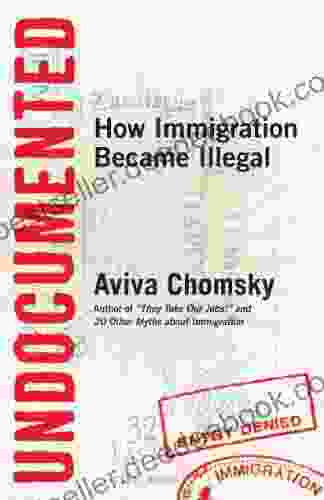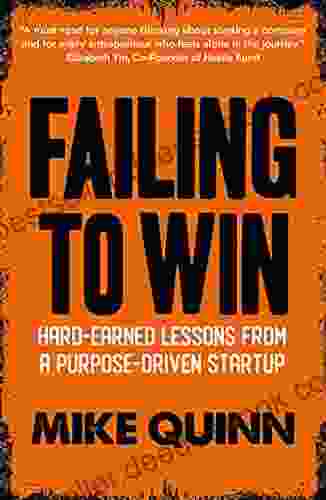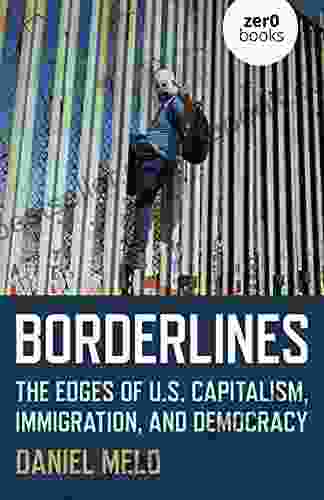Undocumented: How Immigration Became Illegal in America


Undocumented immigration is a complex and controversial issue that has been at the forefront of American politics for decades. But how did immigration become illegal in the first place?
To understand the answer, we need to go back to the late 19th century. In the 1880s and 1890s, the United States experienced a wave of immigration from Europe, especially from southern and eastern Europe. These immigrants were often poor and working-class, and they faced discrimination from the established Anglo-Saxon majority.
4.4 out of 5
| Language | : | English |
| File size | : | 2591 KB |
| Text-to-Speech | : | Enabled |
| Screen Reader | : | Supported |
| Enhanced typesetting | : | Enabled |
| Word Wise | : | Enabled |
| Print length | : | 257 pages |
In response to this influx of immigrants, Congress passed a series of laws that restricted immigration. The first of these laws, the Chinese Exclusion Act of 1882, barred Chinese laborers from entering the United States. This was followed by the Immigration Act of 1891, which imposed literacy tests and other requirements on immigrants.
These laws were designed to reduce the number of immigrants coming to the United States, and they were largely successful in ng so. However, they also created a class of undocumented immigrants people who had entered the United States illegally or who had overstayed their visas.
The number of undocumented immigrants in the United States grew steadily over the course of the 20th century. In the 1920s, there were an estimated 1 million undocumented immigrants in the United States. By the 1950s, that number had grown to 2 million. And by the 1980s, there were an estimated 3 million undocumented immigrants in the United States.
The Immigration Reform and Control Act of 1986 was a major turning point in the history of undocumented immigration in the United States. This law granted amnesty to undocumented immigrants who had been living in the United States since 1982. It also imposed new penalties on employers who hired undocumented immigrants.
The Immigration Reform and Control Act of 1986 was a major success in reducing the number of undocumented immigrants in the United States. However, it also created a new class of undocumented immigrants people who had entered the United States since 1982.
The number of undocumented immigrants in the United States has continued to grow in recent years. In 2017, there were an estimated 11 million undocumented immigrants living in the United States.
The issue of undocumented immigration is a complex one with no easy solutions. There are many different perspectives on the issue, and there is no consensus on how to resolve it.
Undocumented immigrants are often portrayed as criminals, but the vast majority of them are simply people who are trying to improve their lives and provide for their families. They are often willing to work hard and contribute to society, but they are often denied the opportunity to do so because of their legal status.
The issue of undocumented immigration is a humanitarian issue, and it should be treated as such. We need to find a way to bring undocumented immigrants out of the shadows and allow them to participate fully in American society.
The Historical Background of Immigration Law
The United States has a long and complex history of immigration law. The first immigration law was passed in 1790, and it required all immigrants to be free white persons. This law was followed by a series of other laws that restricted immigration from certain countries and groups of people.
In the late 19th and early 20th centuries, the United States experienced a wave of immigration from Europe. This immigration was largely driven by economic factors, as people from all over Europe were seeking a better life in America.
In response to this influx of immigrants, Congress passed a series of laws that restricted immigration. The first of these laws was the Chinese Exclusion Act of 1882, which barred Chinese laborers from entering the United States. This was followed by the Immigration Act of 1891, which imposed literacy tests and other requirements on immigrants.
These laws were designed to reduce the number of immigrants coming to the United States, and they were largely successful in ng so. However, they also created a class of undocumented immigrants people who had entered the United States illegally or who had overstayed their visas.
The number of undocumented immigrants in the United States grew steadily over the course of the 20th century. In the 1920s, there were an estimated 1 million undocumented immigrants in the United States. By the 1950s, that number had grown to 2 million. And by the 1980s, there were an estimated 3 million undocumented immigrants in the United States.
The Immigration Reform and Control Act of 1986 was a major turning point in the history of undocumented immigration in the United States. This law granted amnesty to undocumented immigrants who had been living in the United States since 1982. It also imposed new penalties on employers who hired undocumented immigrants.
The Immigration Reform and Control Act of 1986 was a major success in reducing the number of undocumented immigrants in the United States. However, it also created a new class of undocumented immigrants people who had entered the United States since 1982.
The number of undocumented immigrants in the United States has continued to grow in recent years. In 2017, there were an estimated 11 million undocumented immigrants living in the United States.
The issue of undocumented immigration is a complex one with no easy solutions. There are many different perspectives on the issue, and there is no consensus on how to resolve it.
The Human Cost of Undocumented Immigration
The human cost of undocumented immigration is often overlooked in the debate over immigration policy. Undocumented immigrants are often vulnerable to exploitation and abuse, and they live in constant fear of deportation.
Undocumented immigrants are often paid less than minimum wage and they are often forced to work in dangerous conditions. They are also often denied access to basic services, such as healthcare and education.
The fear of deportation can have a devastating impact on the lives of undocumented immigrants. It can lead to anxiety, depression, and other mental health problems. It can also make it difficult for undocumented immigrants to maintain relationships with their families and communities.
The human cost of undocumented immigration is a serious problem that must be addressed. We need to find a way to bring undocumented immigrants out of the shadows and allow them to participate fully in American society.
4.4 out of 5
| Language | : | English |
| File size | : | 2591 KB |
| Text-to-Speech | : | Enabled |
| Screen Reader | : | Supported |
| Enhanced typesetting | : | Enabled |
| Word Wise | : | Enabled |
| Print length | : | 257 pages |
Do you want to contribute by writing guest posts on this blog?
Please contact us and send us a resume of previous articles that you have written.
 Book
Book Novel
Novel Chapter
Chapter Text
Text Story
Story Genre
Genre Newspaper
Newspaper Paragraph
Paragraph Sentence
Sentence Shelf
Shelf Glossary
Glossary Preface
Preface Synopsis
Synopsis Annotation
Annotation Footnote
Footnote Manuscript
Manuscript Scroll
Scroll Tome
Tome Bestseller
Bestseller Classics
Classics Narrative
Narrative Biography
Biography Autobiography
Autobiography Reference
Reference Dictionary
Dictionary Thesaurus
Thesaurus Character
Character Catalog
Catalog Borrowing
Borrowing Periodicals
Periodicals Research
Research Lending
Lending Reserve
Reserve Reading Room
Reading Room Rare Books
Rare Books Dissertation
Dissertation Reading List
Reading List Book Club
Book Club Theory
Theory Textbooks
Textbooks Tracy Sugarman
Tracy Sugarman L P Dover
L P Dover W Timothy Coombs
W Timothy Coombs John T Jost
John T Jost Carin Oliver
Carin Oliver Cassandra Robbins
Cassandra Robbins Alison Weber
Alison Weber C M Lockhart
C M Lockhart Matthew R Walsh
Matthew R Walsh Richard D Parsons
Richard D Parsons Theodore Raymond Riddle
Theodore Raymond Riddle Meryl Urson
Meryl Urson Jami Davenport
Jami Davenport Scott Mason
Scott Mason Christopher C Tubbs
Christopher C Tubbs John Hinson
John Hinson Fran Pickering
Fran Pickering Jack Campbell
Jack Campbell Wallace Jackson
Wallace Jackson Layla Jones
Layla Jones
Light bulbAdvertise smarter! Our strategic ad space ensures maximum exposure. Reserve your spot today!

 Donald WardExperience the Enchanting Beauty of Japan: A Photographic Journey from Tokyo...
Donald WardExperience the Enchanting Beauty of Japan: A Photographic Journey from Tokyo... Ian PowellFollow ·7.2k
Ian PowellFollow ·7.2k Andres CarterFollow ·12.9k
Andres CarterFollow ·12.9k Harvey HughesFollow ·5.5k
Harvey HughesFollow ·5.5k Abe MitchellFollow ·4.8k
Abe MitchellFollow ·4.8k Foster HayesFollow ·18.1k
Foster HayesFollow ·18.1k Jeremy MitchellFollow ·12.3k
Jeremy MitchellFollow ·12.3k Lawrence BellFollow ·2.1k
Lawrence BellFollow ·2.1k Ian McEwanFollow ·16.8k
Ian McEwanFollow ·16.8k

 Brian Bell
Brian BellClassic Festival Solos Bassoon Volume Piano...
The Classic Festival Solos Bassoon Volume...

 Aubrey Blair
Aubrey BlairUnveiling the Courage: Insurgent Women Female Combatants...
In the face of armed...

 Jan Mitchell
Jan MitchellFor The Liberty Of Texas: The Lone Star State's Fight for...
The Republic of Texas was a sovereign state...

 Edgar Allan Poe
Edgar Allan PoeVisible, Explainable, Trustworthy, and Transparent...
What is VET2...
4.4 out of 5
| Language | : | English |
| File size | : | 2591 KB |
| Text-to-Speech | : | Enabled |
| Screen Reader | : | Supported |
| Enhanced typesetting | : | Enabled |
| Word Wise | : | Enabled |
| Print length | : | 257 pages |














